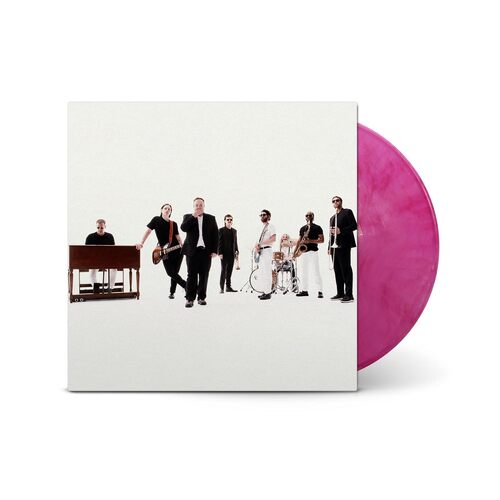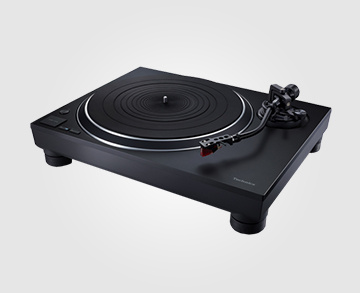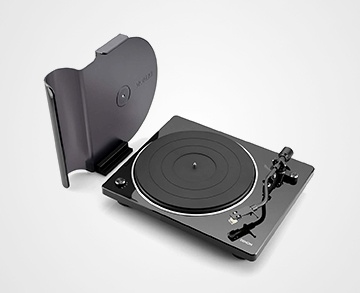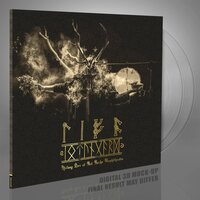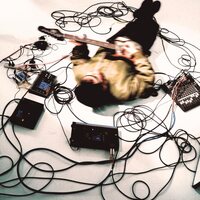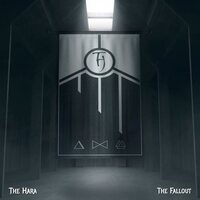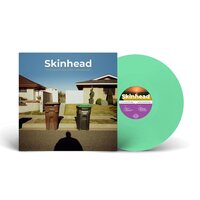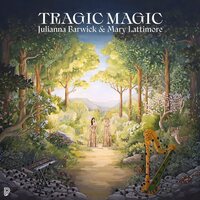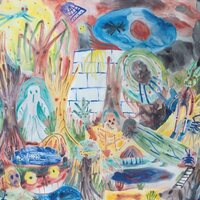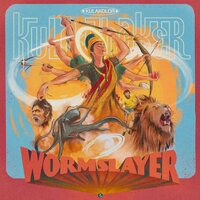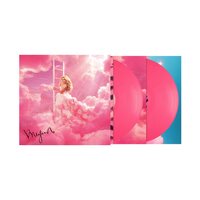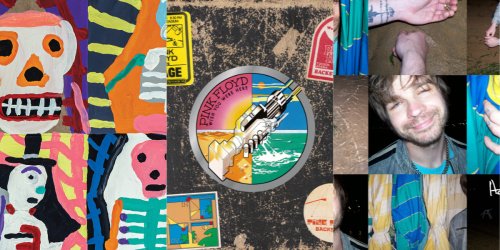In rock-music mythos, the self-titled album is a line in the sand—typically signifying a reinvention, a reunion, or a return to roots. St. Paul & The Broken Bones, the sixth LP from Birmingham’s ever-evolving Southern-soul giants, is somehow all of these things at once—carrying forward the experimental spirit of their back-to-back heavyweights The Alien Coast and (2022) Angels in Science Fiction (2023), but with a warmer, more accessible vibe that recalls the fun, exuberance, and buoyancy of their breakout debut, Half the City (2014), and beloved follow-ups Sea of Noise (2016) and Young Sick Camellia (2018) . As singer and co-founder Paul Janeway puts it, these 10 songs represent a "reset and a refresh" after a frenetic few years.
"It’s the outcome of the book we wrote with the last records," he says, surveying the band’s evolution into period that touched on art-rock structures, stoner metal atmosphere, and rap beats. "[The self-titled album] is what the band is now. I think the band in general feels reignited. I’ve had this conversation with [bassist and co-founder] Jesse [Phillips], who said, 'I don’t know where we can take this. But we have the opportunity to make any kind of record we want."
So with the new LP, co-written and produced with the decorated Eg White, they decided to stop pushing so hard and simply focus on classic "song craft." For Janeway, these 10 thrilling tunes feel like "comfort food," like hanging out at a "great barbecue joint." Before, "the band thought, 'How far can we take it?'" Now? "It’s 'What is the band great at? What lessons have we learned?’"
Janeway has learned many lessons, both personal and creative, since September 2020, when The Broken Bones finished recording Angels in the Science Fiction. With that vibrant era in the rear view, Janeway started collaborating with a series of co-writers and featured artists, eventually finding the perfect partner in White: a prolific, London-based pop-rock veteran who’s co-written and produced hits with stars like Adele ("Chasing Pavements") and Celine Dion ("Water and a Flame"). Aided by that expert ear, Janeway finished a batch of new music he was proud of—but he pivoted back to full-band mode in January ’24, regrouping with his old friends at the iconic FAME Studios in Muscle Shoals, where they’d mixed their debut, Half the City, over a decade earlier.
The room was immediately alive—given that they recorded their last two LPs remotely, it had been several years since they'd written together in this format. But then Phillips asked an intriguing question: 'Hey, man, can I hear some of the stuff you wrote with Eg White?" Janeway was initially reluctant to bring this music "into the band sphere," but his co-founder convinced him otherwise. They dusted off some of those tracks, melding them with the new group-written material and additional ideas Janeway cooked up with White after returning to London. "Basically our philosophy for the record was 'best song wins,'" the frontman says.
Nonetheless, the octet—Janeway, Phillips, guitarist Browan Lollar, drummer Kevin Leon, keyboardist Al Gamble, trumpeter Allen Branstetter, saxophonist Amari Ansari, and trombonist Chad Fisher—had concerns. "What we were really worried about is, 'Are we gonna make Half the City 2?'" Janeway admits. "But I said, 'We’re not.' Albums are time capsules. They always will be. This is not the same band. Even if we tried to sit down and write the same record, it’s not possible because that was a moment in time."
He’s absolutely right. The songs do ultimately feel like a comforting hug: the back-porch-on-a-summer-evening glow of "Fall Moon," with its rippling Hammond organ and nostalgic brass; the bluesy "I saw the light" chorus of the swaggering "Ooo-Wee"; the stabbing electric keys and signature falsetto sweetness on "I Think You Should Know"; the deep-pocket bass and growling hooks on "Nothing More Lonely"; the breezy slice-of-life that is "Seagulls," on which Janeway belts, "Perfect weather morning, drifting in the undertow / Seagulls on the awning, preacher on the radio." But St. Paul still branches out in subtle ways that this band never would have 10 years ago. Take lead single "Sushi and Coca-Cola," a psych-funk banger—with an uncharacteristically sparse opening verse—that shines a light on a moment of domestic bliss.
"I was sitting in my living room, drinking a Mexican Coca-Cola and having some sushi—as on-point as it can be—with my wife and little girl," Janeway recalls. "I felt, 'Man, this is a great place.' You know how you have moments that feel like a warm bath'? This is one that me and Eg were writing, and I’d been saving it.’ I just like the way [the title] sang. I think everyone at first thought, 'That’s weirdly specific.' Had I just said 'dinner and a drink,' that doesn’t do it. We came up with this scenario about having a shit day but finding the comfort in that thing."
"Sitting In The Corner" is a sassy soul-rock anthem, but it’s also deceptively weird—from its frantic chorus drumming to a spoken-word section that just may conjure Taylor Swift to a long, brash horn drone that Janeway describes as "almost Radiohead-esque." "That was written by the band at Muscle Shoals, but that’s a prime example of why Eg was so important as a producer and arranger," he says. "When we wrote that song, we thought, 'OK, we’ll see.' He said, 'Can you do the chorus more like a Curtis Mayfield 'Superfly' kind of way?' We said, 'I don’t know, man.' Then when we heard it—'Oh, shit.' It made the song!"
White was, indeed, essential to the band’s creative process—and working with The Broken Bones offered a jolt for him too. "It turned out to be exactly what I needed to do, at least for myself," the producer says. "I’ve got so used to constructing music on a computer, and even though you can make a really tidy record that way, I've had a nagging feeling for a while that sometimes the body knows what to do better than the mind—and maybe if you want to make music that has feelings, the act of playing, instead of dragging samples onto a desktop might bring home a better bacon."
Given that he hadn’t made a real band album since 1994, it was a real a shake-up in terms of process. "Though we all spoke on the phone and everybody talked about what we would bring to the studio, I thought it was quite likely that we would all bring our best gear, and our best selves, and still everything we play might sound like shit," he admits. "Obviously, we all worship the records that had been made at FAME Studios 50 years ago, but that was a group of people who worked together six days a week, ironing out problems and getting to know the room, the gear, and each other. And we weren't those people—50 years had passed, and you can never tell what's actually going to happen on the day. Actually we had 12 days, but thanks to some truly dangerous Southern cooking, the sweetness of mid-century American electronics, the lasting powers of FAME's surprisingly beautiful 1963 Formica, and an inexhaustible supply of dick jokes, we did make an album, and a few extra tracks, in those 12 days."
The record’s most surprising and sublime moment arrives toward the end of "Stars Above," when Lollar—utilizing one of FAME’s well-loved electric sitars—throws down a nasty solo a la Steely Dan’s "Do It Again." ("It gets into really interesting territory for me," Janeway says of the track. "There’s obviously some Motown influence, but there’s also a little bit of Brian Wilson/Beach Boys stuff in there as well.")
It would have been easy to worry, given its zigzagging origins, about the album’s continuity. But with the band adding their spark to every song, guided along the way by White and previous collaborator Matt Ross-Spang, they—perhaps ironically—wound up with their most cohesive record in several years. Janeway’s lyrical perspective also gives the project a particular focus, and he had plenty to draw from this time out. He was a proud new father, having eased some of the parental anxieties that crept up on Angels in Science Fiction, but he also felt the weight of career confusion. A darkly funky tale of isolation, "Change a Life" shadows Janeway during an "existential crisis"—working on music in London, feeling isolated adrift, at one point shame-eating at a "dirty Burger King."
"That’s my favorite line on the whole record," he says. "I know where my state was. I remember at one point feeling, 'I want to go home. I’m tired of doing this. That’s a song that Jesse absolutely adores because he loves all that religious imagery: 'I’m not asking for a resurrection'—just give me something. It’s a little dramatic, but it’s got a dark pop thing to it. It’s very introspective."
That imagery is a recurring theme for Janeway, a one-time preacher-in-training who still finds comfort in religious symbolism, and there are references sprinkled throughout this album, including on the vivid closing ballad "Going Back," in which he returns to "where the hurt is, where the dirt is." That process involves visiting a church, where "the mix of Clorox and the pine shreds [his] nerves."
"That one is probably the most emotionally in-the-nerve-type song," he says. "It’s so vulnerable. Some of my family had moved back to where I’m from, so I was there helping them move. I had this interaction with someone I went to high school with and hadn’t seen in a long time, and it gave me this weird 'I want to get out of here' kind of feeling."
"I had this long conversation with my wife, and I think it’s that the person I was there was kind of a loser," he continues. "I didn’t have a lot going on in my life. I’ll never forget—I was working at Hibbett Sports, and one of those people came in. There are all these bad memories. I just felt like I had not done anything in my life. I thought, 'Oh, my God.' It’s not this horrible place, but I just had a moment that made my stomach turn. I had a physical reaction. That’s where this song was birthed. It has the specificity in it, but you want to pull back a little bit. But 'like a wounded bird, with no idea how bad the damage is'—I’ll take that one to the grave. That’s when I decided, 'That’s how the album needs to end.' I think most records I’ve done have some sort of nerve [center], drilling down—I get emotional when I sing it."
But those moments of hurt and frustration are still anchored to the open-hearted humanity that’s become this band’s calling card. With St. Paul & the Broken Bones, Janeway felt like they’d taken their sonic searching as far it could go—or at least "without doing some kind of death-metal album." But it raised a lot of important questions: "'What are we doing? What is the band now?’ You go through that kind of identity-crisis stuff. What is the band, and is this still creatively satisfying?"
The answer is clear.
"Making this record was a long journey, but I think it’s one of those rare times where it felt really worth it," Janeway says. "It feels very much like a renewed energy. And who knows? We might make our death metal record next."
1. Sushi and Coca-Cola2. Fall Moon3. Ooo-Wee4. Sitting In The Corner5. I Think You Should Know6. Nothing More Lonely7. Stars Above8. Seagulls9. Change a Life10. Going Back
Release date:
October 10, 2025
Label:
Install our app to receive notifications when new upcoming releases are added.

